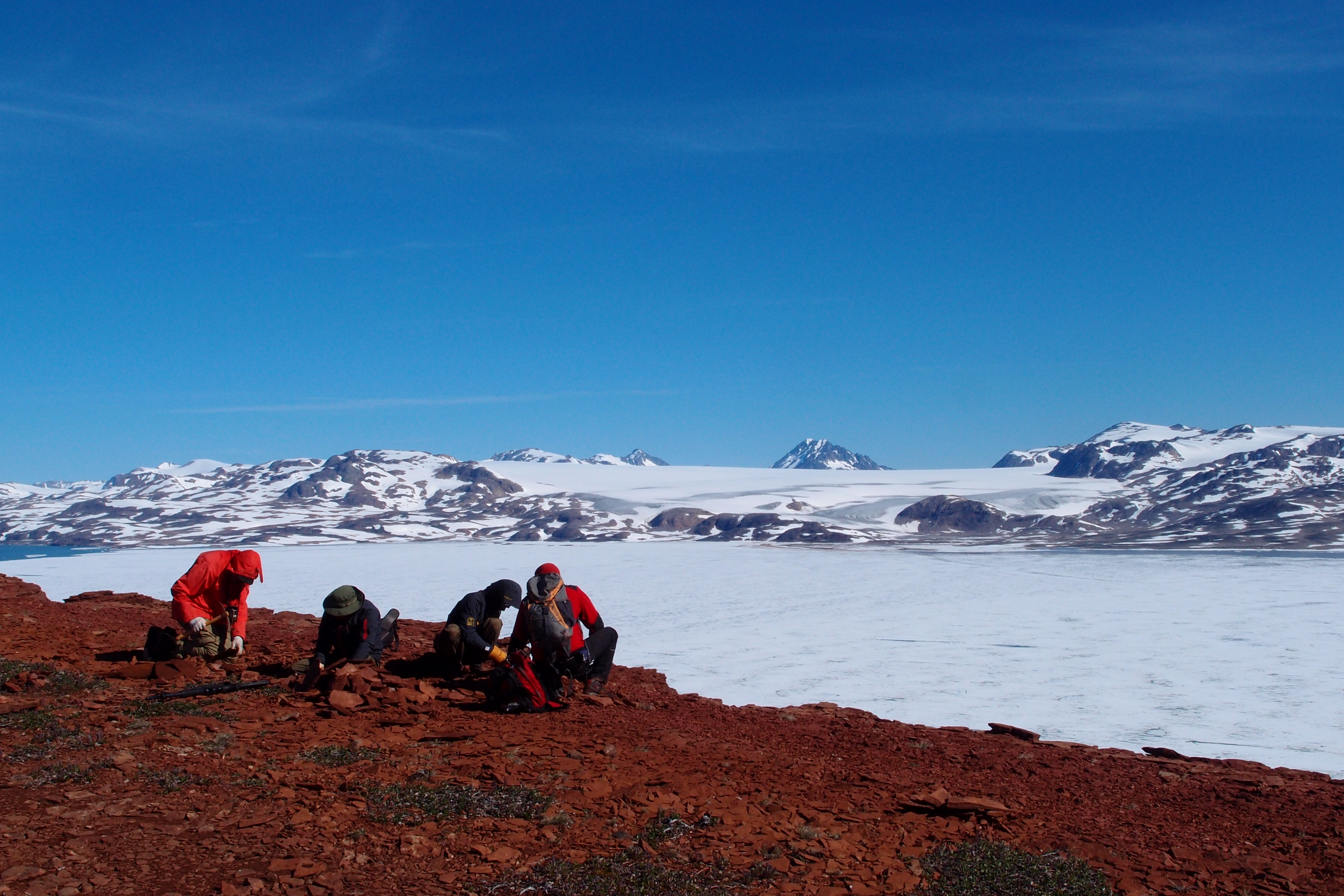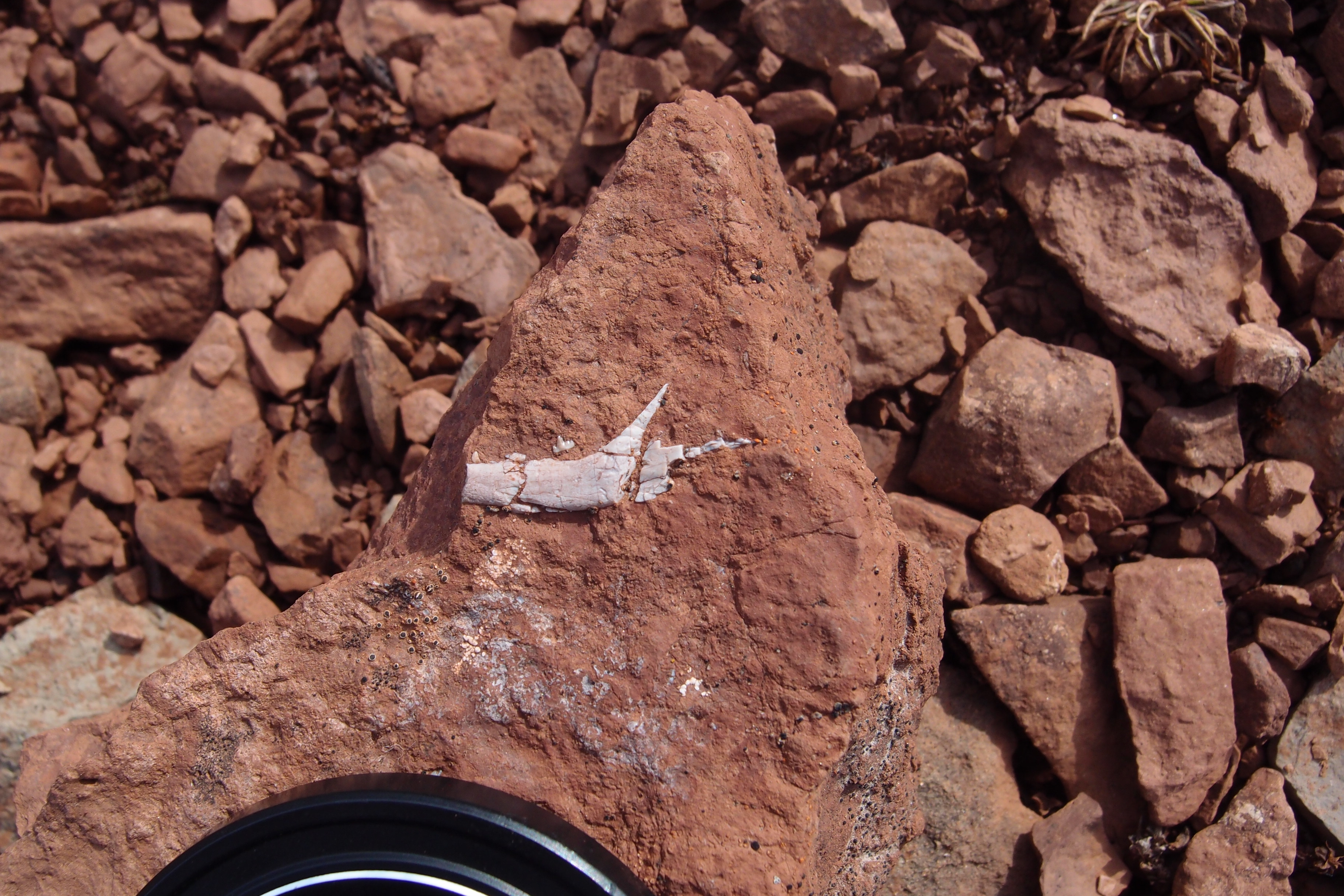Polish paleontologists discover the oldest mammaliaform fossil
Polish researchers has discovered and described the remains of the world’s oldest mammaliaform from Greenland. During an expedition, organized by Dr. Tomasz Sulej from the PAS Institute of Paleobiology, a fragment of the lower jaw with two double-rooted teeth was found in rocks dating from 215 million years ago. This groundbreaking discovery, which sheds new light on the origin of the mammals, has been published in the latest issue of PNAS journal.

Photo by Dr. Tomasz Sulej, PAS Institute of Paleobiology
The fossilized creature from Greenland is the oldest relative of modern mammals. Examinations of its lower jaws suggest that the animal could be a transition stage between species eating mainly insects and those eating plants.
The first mammals arose in the late Triassic period (about 237-201.3 million years ago). It is thought that small mammal-like reptiles – called cynodonts – gave rise to mammals. The earliest known mammals may have resembled today's shrews in terms of size and way of life. What distinguished them from cynodonts was small size, durable lower jaw consisting of a single bone and multi-rooted teeth. Most of these innovations evolved in ancient mammaliaforms due to a change of diet.
A unique tooth
A fragment of the mandible and two double-rooted teeth was subjected to a comprehensive analysis of an early mammaliaform dentary. Scientists have combined data from comparative anatomy, CT scanning and FEA. In addition, using 3D modeling, they evaluated the strength of the world's oldest double-rooted tooth. It turned out that double-rooted teeth with a wide crown and multiple cusps, found in omnivores, are much more resistant to bite-related stress than single-rooted teeth.

Photo by Dr. Tomasz Sulej, PAS Institute of Paleobiology
Kalaallitkigun jenkinsi
A team of researchers led by Dr. Tomasz Sulej from the PAS Institute of Paleobiology has named the newly discovered species – Kalaallitkigun jenkinsi. In the Inuit language Kalaallitkigun means "a tooth from Greenland", while generic name jenkinsi – refers to the American researcher – Farish A. Jenkins – a palaeontologist, who headed the first expeditions to Greenland.
Read the full article "The earliest-known mammaliaform fossil from Greenland sheds light on origin of mammals" in the latest issue of Proceedings of the National Academy of Sciences of the United States of America.
